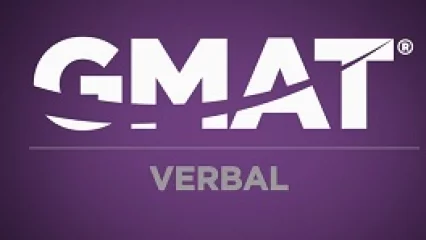As you will find out from this video, from the new GMAT tutorial series produced by PrepAdviser and examPAL, you will read a single sentence which contains an underlined segment, and which is followed by five answers.
These answers may, at first glance, seem identical to the underlined segment and to each other, but are, in fact, all slightly different: four of them contain a mistake, and only one is correct. These questions test your English-language proficiency and your ability to identify mistakes in grammar, terminology, and sentence construction. Preparing for these types of questions requires studying concepts such as the relationship between subjects and verbs or between nouns and their pronouns; the different forms and tenses of verbs; and modifiers and parallelism.
In each Sentence Correction question, the first answer choice, (A), will always be identical to the underlined section in the question. Choosing it means there is nothing wrong with the original sentence. All four other options are alternatives to the original phrasing, only one of which can be correct.
Check out: GMAT Tutorials: Critical Reasoning (Video)
As with all verbal questions, time is of the essence – you have to identify what is wrong and figure out what is right as quickly as possible.
Let’s look at some examples taken straight from the real test (with special approval from the GMAC):
Executives and federal officials say that the use of crack and cocaine is growing rapidly among workers, significantly compounding the effects of drug and alcohol abuse, which already are a cost to business of more than 100$ billion a year.
In this sentence you can figure out just by looking at it that something is wrong: the phrase “already are a cost to business” is wrong, since the effects cost business, but they are not a cost in themselves. But what do you do now? If what is supposed to come here is not immediately obvious, you should take the ALTERNATIVE approach of checking the other answer choices.
(B) looks good. It does not have the problem (A) had (the drugs are presented as costing, not as being a cost). But unless you are 100% certain everything is right with it, you should look at the other options as well.
(C) is problematic, since the phrase “already with business costs of” makes it sound as if the drugs and alcohol themselves have business costs, and not as if they create costs.
Sometimes, different answers will share certain characteristics, which you can check and thus eliminate a few answers straight away. An example of this are answer choices (D) and (E) – “significant”, as opposed to “significantly”, is wrong as it is not clear what it refers to. Thus, you can eliminate them together.
Check out: GMAT Tutorials: Reading Comprehension (Video)
So this question was best answered by doing an answer comparison. But this is not always the way to go with verbal questions. First, because there is simply not enough time to read all the answers to all the questions and compare them (even more so if you are not a native English speaker). Second, as the answers can be very persuasive, they may lead you in wrong directions that you may not have even considered in the first place.
How else can you solve them then? Let’s see another example from the official test:
Like Auden, the language of James Merrill is chatty, arch and conversational – given to complex syntactic flights as well as to prosaic free-verse strolls.
This question can be quickly solved in a precise way, since you can figure out what is wrong with the original sentence just by looking at it. How so? This question exemplifies something called parallelism: this means that when there is a connection between parts of the sentence with the same function (verbs, pronouns, clauses, etc.), they must have the same form. Here, the underlined section makes the mistake of creating a parallel between two things which are fundamentally different: a person (Auden) and a language (that of James Merrill). As the rest of the sentence is clearly referring to a language and not to a person (chatty, conversational, syntactic), you know the correct answer must refer to Auden’s language. This is exactly what answer choice (C) does. By adding a possessive apostrophe “s”, you have a parallel.
Sometimes, correcting the sentence will require you to understand its logic. Pause the video and try to solve this question:
The world’s largest carmaker announced that bonuses for its Japanese workers be raised to 2.05 million Yen per person up from 1.77 million Yen last year, due to the company’s forecast that it more than tripled its net profit this year, to 860 billion yen.
In this sentence, the company is announcing something that will happen, and thus you need the word “will” before “be raised”. Another thing that stands out is that a forecast is, by definition, of something hypothetical that happens in the future – and thus the forecast must be that this company would triple its profits this year, and not “tripled”. Taken together, these corrections point to answer (E).
The bottom line is that, while knowing grammatical rules is essential for Sentence Correction, you still must pay attention to logic. Not sure? Just compare the answers and see what they say.



